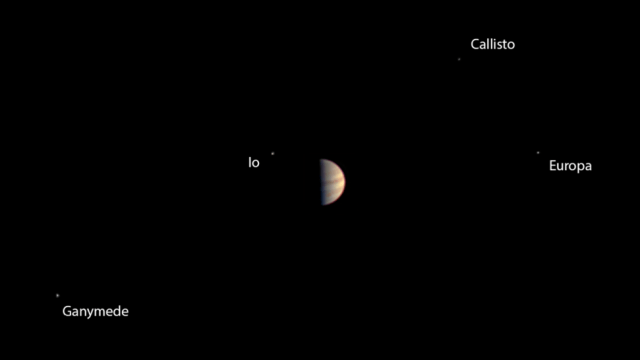Today is the day, my fellow space nerds. After five years and 716 million km, NASA’s Juno mission is about to arrive at Jupiter, becoming the second spacecraft in history to orbit the gas giant. We hope.
The final image taken by JunoCam before its instruments were powered down. Image: NASA/JPL-Caltech
First, Juno has to perform a high-risk sequence of manoeuvres culminating in a 35-minute main engine burn at 1:18PM AEST (11:18PM ET). That burn causes the spacecraft to shed some 542m/s of velocity; enough to be captured by Jupiter’s gravity.
The key events of the Juno orbital insertion (JOI) begin around 12:30PM AEST (10:30PM ET), when Juno pivots away from the sun for the first and only time to position its engine for the burn. The solar-powered spacecraft will have to rely on batteries for the duration of the JOI, and it will only be able to talk to Earth using its low-gain antenna, with a signal strength about a billion times weaker than a mobile phone call.
In brief, here’s how things are going to go down:
12:28PM AEST (10:28PM ET): Juno pivots away from the sun and toward its orbital insertion attitude.
12:58PM AEST (10:56PM ET): Juno “spins up” from two to five revolutions per minute in order to stabilise itself for the main engine burn.
1:18PM AEST (11:18PM ET): The burn begins.
1:58PM AEST (11:53PM ET): The burn ends, leaving Juno in its first, 53.5 day orbit.
1:55PM AEST (11:55PM ET): The spacecraft slows its back down to two revolutions per minute.
2:30PM AEST (12:30AM ET): Juno re-orients toward the sun to recharge its batteries. At this point, if all signals look good, we can all relax.
Before, during and after the JOI, Juno’s mission team will be listening for a series of status tones from the spacecraft, using antennas at the Deep Space Network stations in Goldstone, California, and Canberra, Australia. These tones tell NASA that various milestones have been reached, and most importantly, that the deceleration burn has ended.
If anything goes wrong — if the engine doesn’t fire, if the flight computer crashes, or if a small piece of dust damages the spacecraft — Juno will wind up in the wrong place, and the mission’s kaput. There’s no way for NASA to fix any problems that arise during the JOI, because it takes 48 minutes to send a signal from Earth. In other words, things are going to be a wee bit tense around the Jet Propulsion Laboratory today.
If everything does work, Juno will spend the next 20 months taking unprecedented, high-resolution images of Jupiter, and peering deep beneath the gas giant’s cloud tops to discover what lies at its centre.
NASA will live stream today’s proceedings in all of their nail-biting glory beginning at 12:30PM AEST (10:30PM ET). Follow along right here.
